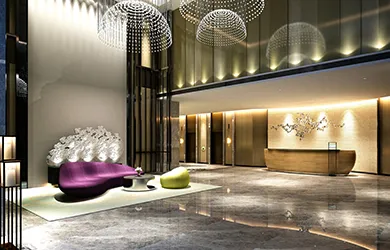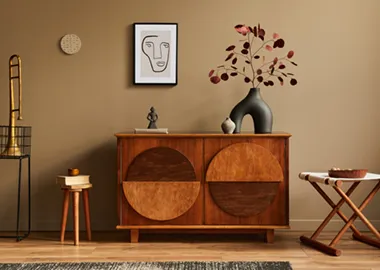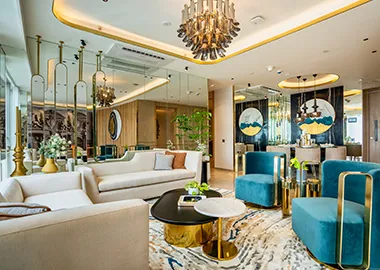Wabi-Sabi Living: The Zen of Japanese Minimalist Design
By design pataki
September 29, 2023In a world cluttered with excess, where contemporary home interior design often leans towards the extravagant and the flashy, there's a profound allure to the simplicity and tranquillity of Japanese minimalism. Rooted in the ancient philosophy of wabi-sabi, this design ethos has captured the hearts and homes of those seeking harmony and serenity in their living spaces. In this blog, we will explore the essence of wabi-sabi interior design and how you or any interior design company can transform your home into a haven of peace and elegance
Before delving into the realm of wabi-sabi modern interior design, let's take a step back and understand the origins of this profound aesthetic. Wabi-sabi is deeply rooted in Japanese aesthetics and philosophy. It finds beauty in imperfection, celebrates the transience of life and embraces simplicity and authenticity.
This concept reverberates with the belief that everything on our planet, regardless of whether it's a living being or an inanimate object, undergoes a graceful transformation as it ages. With each crack, fade or scar, there's an enhancement of its intrinsic beauty.
Within contemporary interior design, wabi-sabi's influence is undeniable. It encourages us to look beyond the glossy, picture-perfect rooms we see in magazines and on social media, directing our attention instead towards the allure of natural materials, the marks of time, and the narratives embedded in the walls of our residences.
Balancing Modernity and Tradition: The Art of Wabi-Sabi Integration
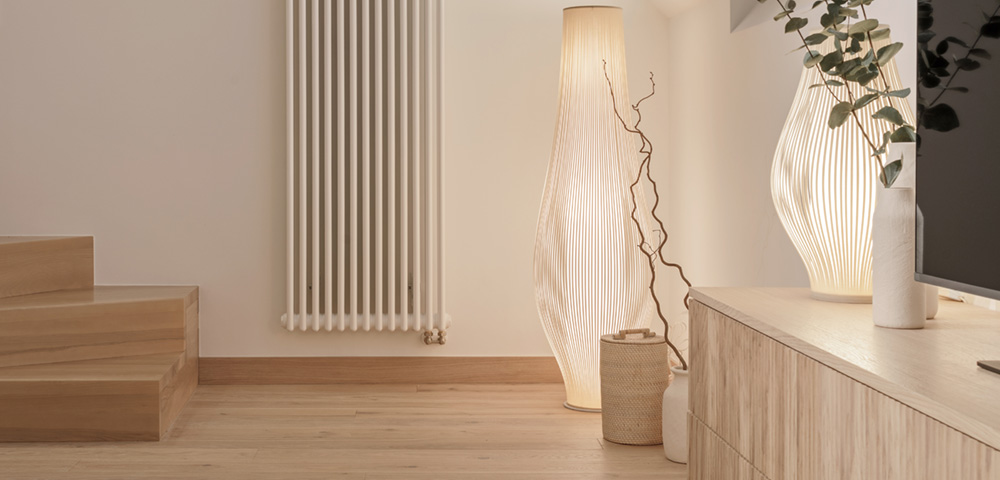
In a world obsessed with flawless finishes and pristine spaces, wabi-sabi interior design invites us to cherish the beauty of raw, unrefined elements. Incorporating wabi-sabi into your contemporary home design means finding a delicate balance of both aesthetics by choosing pieces that bear the marks of time and are worn proudly. Modern home interior design trends often favour clean lines, sleek finishes, and high-tech gadgets. However, wabi-sabi can still find its place in this context through the following:
A Connection to Nature
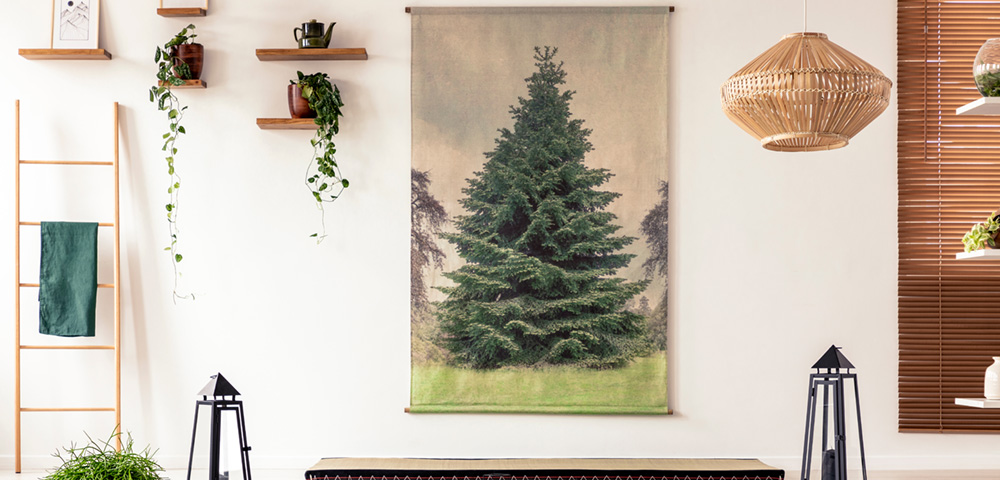
Incorporating nature into wabi-sabi modern interior design involves more than just the use of natural materials; it's about fostering a deep connection with the environment. The embrace of natural materials like wood, stone and bamboo remains a core tenet, lending spaces a warm and authentic ambience. These materials not only visually enthral but also instil a profound sense of serenity and equilibrium.
The design also welcomes elements like ample sunlight streaming through large windows. Indoor plants, another integral aspect of wabi-sabi, foster tranquillity. This infusion of both these elements adds a touch of impermanence, symbolic of life's transience while enhancing aesthetic appeal.
A Minimalist Decor Scheme

The minimalist decor scheme inherent in wabi-sabi interior design embraces clean lines and uncluttered spaces. Yet, it does so with a twist--the cracks, fades and imperfections in materials and objects are welcomed, revered even, as symbols of life's journey. The notion of simplicity shines through as unnecessary embellishments are stripped away, leaving behind only what truly resonates with the soul.
In the spirit of wabi-sabi, spaces are decluttered to the essentials, adopting a "less is more" approach. Room design breathes with a sense of openness, inviting peace and serenity. Within this clean aesthetic, objects displaying signs of wear, such as a beautifully weathered wooden table or a worn rug, are embraced as symbols of life's enduring narrative.
The Color Palette
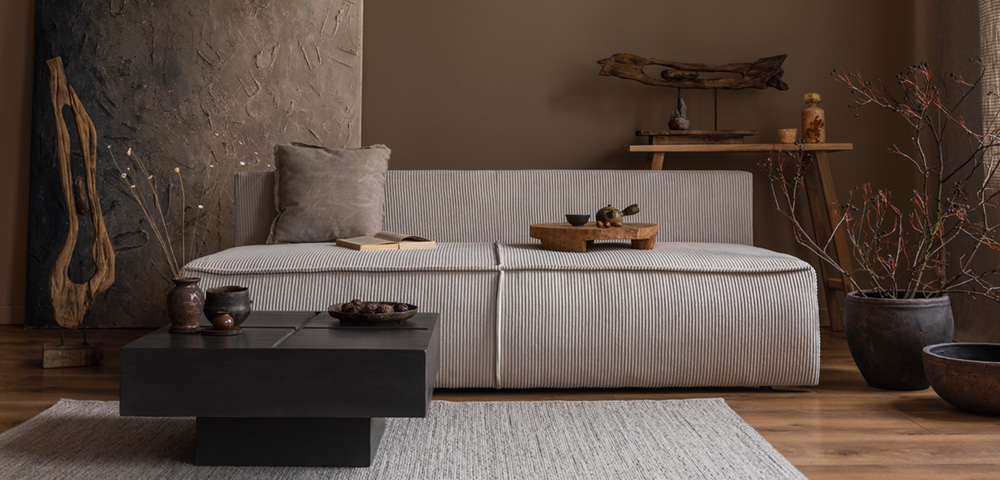
The wabi-sabi colour palette mirrors the subtlety of nature's hues. Earthy and muted tones dominate, reflecting the understated elegance of the world outside. Soft greys evoke the tranquil embrace of overcast skies, while muted greens hint at the verdant life of foliage. Warm browns mirror the earth's rich, grounding presence.
These colours, employed sparingly, create an atmosphere of calm and cohesion within the room's interior design, allowing the focus to shift to the inherent beauty of materials and forms.
Decor and Decor Accents
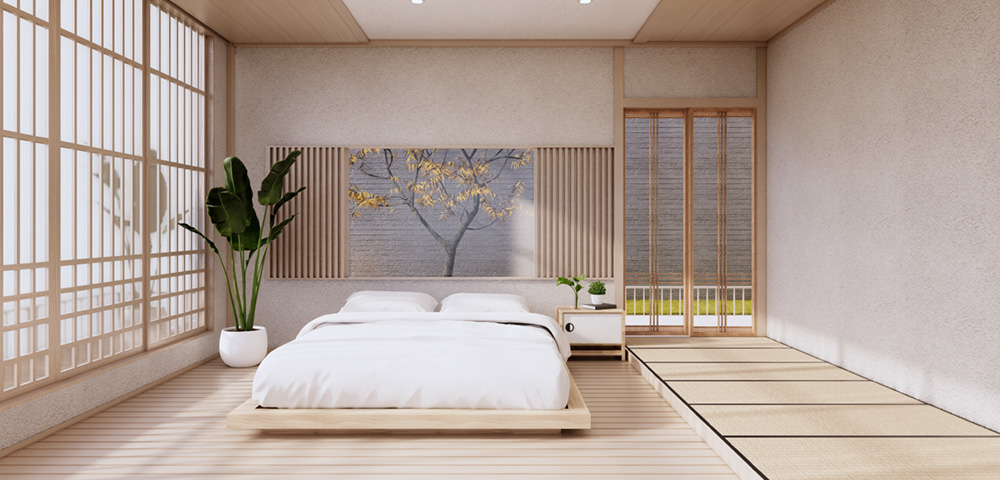
Wabi-sabi decor favours simplicity and functionality, aligning with the core principles of minimalism. Each chosen piece serves a purpose, contributing to the overall sense of tranquillity. It's about selecting furniture and decor that tells a story, enriching your home with some depth and soul.
Unadorned wooden tables, stone countertops and handwoven textiles all contribute to the wabi-sabi aesthetic. Woven baskets and wooden trays, both functional and aesthetically pleasing, offer subtle accents that celebrate the ordinary in extraordinary ways. Using paper lanterns, shoji screens, or sheer curtains also contributes to the Japanese aesthetic while adding a sense of depth with light and shadows.
Handcrafted Objects and Organic Shapes
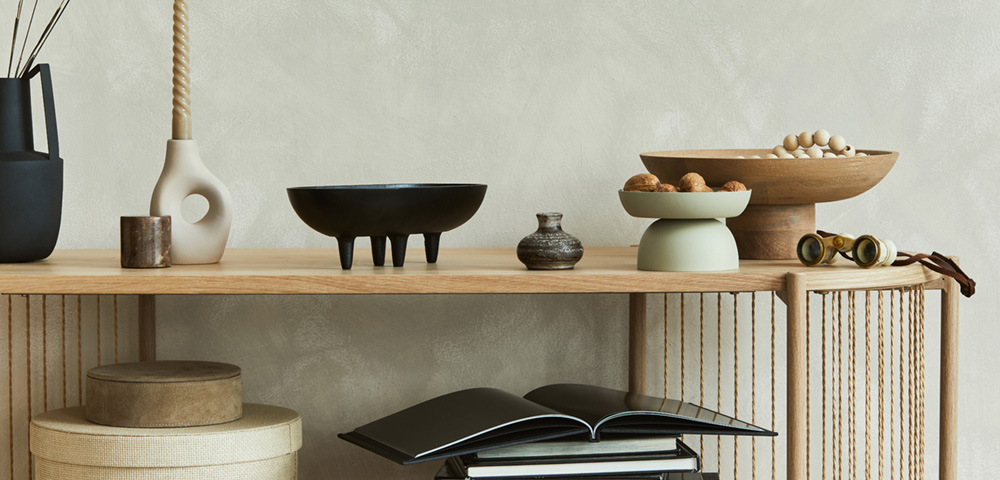
The world of wabi-sabi thrives on handcrafted objects, treasures bearing the unmistakable marks of human touch. These pieces, crafted with care and often showcasing organic shapes, epitomize the essence of wabi-sabi.
Handcrafted ceramics, with their unique imperfections and organic shapes, tell stories of artisanal craftsmanship and the passage of time. Handwoven textiles and rugs, painstakingly created with a keen eye for detail, add layers of texture and warmth, enriching the sensory experience of the space.
In a world filled with noise and distractions, the wabi-sabi interior design style offers a path to serenity and simplicity. It's an invitation to slow down, embrace imperfection, and connect with the natural world. By incorporating wabi-sabi aesthetics into your home design, you can create a living space that not only looks beautiful but also feels peaceful and authentic. In the pursuit of a serene living environment, wabi-sabi is a design philosophy worth exploring, reminding us that true beauty is often found in the imperfect, the transient, and the simple.
A series with Design Pataki
You may also like



 Enquire
Enquire
 Call
Call
 chat
chat
 Search
Search
